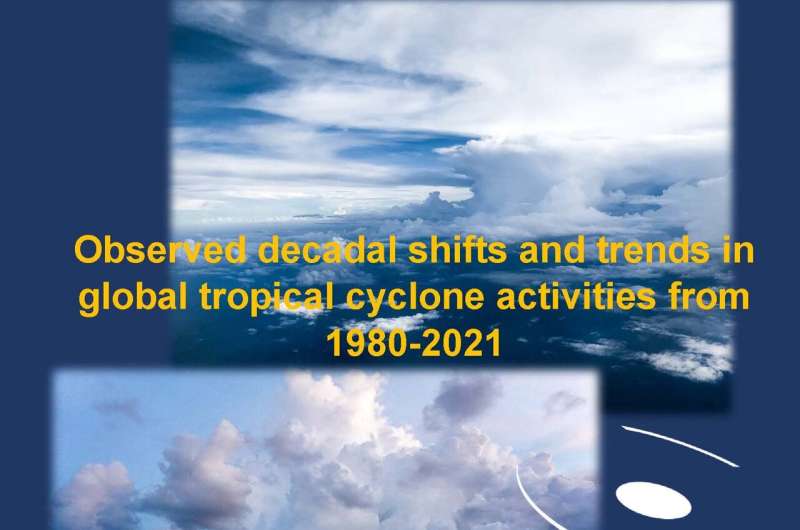This article has been reviewed according to Science X's editorial process and policies. Editors have highlighted the following attributes while ensuring the content's credibility:
fact-checked
trusted source
proofread
Clarifying trends of tropical cyclones to better predict and cope with their destruction

Tropical cyclone (TCs) are one of the most destructive types of weather event on Earth, damaging people's lives and their property, local infrastructure, and subsequently causing enormous economic losses. TCs are strong circular storms originating in the warm tropical oceans and are accompanied by heavy rainfall and strong winds.
However, there has been no consensus among scientists regarding the global-scale trends of TC frequency and intensity due to climate change effects on ocean temperatures. Hence, to achieve this, and ultimately be better prepared for these extreme weather events in the future, a holistic evaluation of the different TC characteristics across ocean basins is vital.
In a recent study published in Atmospheric and Oceanic Science Letters, Professor Wen Zhou from Fudan University, China, and Erandani Lakshani, a post-graduate researcher at the City University of Hong Kong, have shed more light on the observed decadal-scale shifts and trends in global TC activities from 1980 to 2021.
The study reveals that there has been a significant increase in the number of TCs in the North Atlantic basin and North Indian Ocean over the past four decades, while there has been a decrease in the western North Pacific. It was also found that the genesis of TCs in the East Pacific, southern Indian Ocean, and South Pacific Ocean basins has declined since 1980, albeit this trend is not statistically significant.
Along with the frequency of TC genesis, the intensity of TCs has also varied significantly among the different ocean basins.
"Notably, the average maximum TC intensity over the North Indian Ocean has increased recently, and this can be explained by an upward trend in mid-tropospheric relative humidity and decreasing vertical wind shear in the this basin," say Professor Zhou and Lakshani. Their study also points out that the average TC intensity in the East Pacific has decreased dramatically, whereas over the South Pacific it has increased significantly.
Moreover, they observed an increasing TC intensity trend in the western North Pacific but a decreasing trend over the North Atlantic. The TC intensity in the North Atlantic may be linked to the decreasing trend in mid-tropospheric relative humidity, mainly south of the North Atlantic.
Another finding of this work is the indication of a significant association between the average large-scale characteristics of both vertical wind shear and relative humidity and the TC frequency in the different ocean basins. Moreover, the interdependence of TC frequency, vertical wind shear and relative humidity varies across the basins, indicating an inter-basin teleconnection (a term used in the atmospheric sciences to describe climate links between geographically separated regions).
In summary, this study provides valuable insights into global TC trends, which is critical towards improving our understanding of the evolution of TCs. Moreover, the study highlights the need for continued research into the underlying causes of these shifts in TC activity for future predictability and preparedness.
More information: Widana Arachchige Erandani Lakshani et al, Observed decadal shifts and trends in global tropical cyclone activities from 1980 to 2021, Atmospheric and Oceanic Science Letters (2022). DOI: 10.1016/j.aosl.2022.100321
Provided by Chinese Academy of Sciences




















